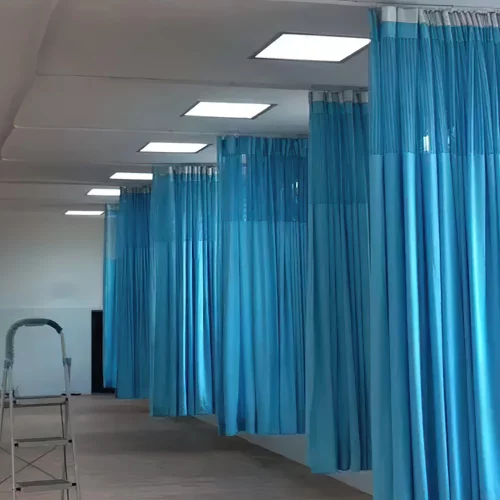職場の安全性向上における難燃性繊維の役割

難燃性繊維の定義
難燃性繊維 処理された生地、または自然に耐炎性のある繊維で作られた生地です。開発の過程で、難燃性繊維は大部分の産業で不可欠なものとなり、今日の義務的な火災安全規制に命を吹き込むことができました。さらに、テキスタイルの開発技術が日々完成するにつれて、この種のテキスタイルはより効果的で快適になり、あらゆるさまざまな作業条件に適合するようになりました。
難燃性繊維の恩恵を受ける作業環境
難燃性繊維の用途は、数多くの作業現場、特に高温、火炎、または電気の危険を扱う現場で幅広く使用されています。製造、建設、公益事業は、そのような衣類が労働者の安全にとって非常に有利である業界の主な例です。溶接や金属加工、高電圧の電気メンテナンス、または可燃性物質を扱うその他の職業のいずれであっても、怪我のリスクを軽減するには、難燃性の繊維を使用した保護服が不可欠です。この分野でのソリューションの使用は、従業員の安全を保証するだけでなく、組織内に安全を意識した文化を確立するのにも役立ちます。
難燃性繊維の作用メカニズム
自己消火能力
難燃性繊維は自己消火機能を備えて設計されており、ほとんどの場合、炎に直面するとすぐに消火しようとします。これらは火災事故の際に不可欠なコンポーネントを形成し、重度の火傷によって着用者が受ける可能性のある潜在的な危害を制限する重要な緩衝材として機能します。したがって、自己消火率は ASTM F1506 などの試験方法で許容可能です。このテストでは、身体の下部と上部の両方を火炎から保護するために使用される材料が満たさなければならない最小要件を指定します。
熱の蓄積を軽減する
自然に消火する能力とは別に、難燃性繊維が高温にさらされたときの熱の蓄積を大幅に軽減することにも注目してください。労働者を保護し、重大なリスクが存在する場合に確実に保護されることが重要です。熱の蓄積が軽減されると、より大きな安全マージンが得られ、作業者が危険な状況に対応する時間が増えることになります。最終的tel、熱的に安定した状態を維持できるため、職場の安全性が向上します。これは、労働者がより適切に保護されることを意味します。
耐久性と弾力性
高ストレス環境における難燃性繊維の有効性は、その耐久性と弾力性によって決まります。これらの素材は産業環境での使用を目的としているため、繰り返し着用したり洗濯したりできます。生地で作られた難燃性の衣服を着用すると、保護具は長期間使用でき、従業員は長期にわたって必要な保護と価値を得ることができます。 NFPA 701 などの国際規格や要件に記載されているように、厳格にテストされた繊維を使用することで、ライフサイクル全体にわたって劣化しないことが保証されます。
難燃性(固有の 難燃性)生地
難燃性生地の概要
固有の 難燃剤(難燃性) 生地は、表面が処理されていない繊維内で耐火性を備えています。 FR 特性は、洗濯や着用を通じてその機能を維持しながら、生地の存続期間中保持されます。これらのファブリックは高い基準を満たすように設計されているため、ISO 6941:2003 や BS 6249 などのさまざまな方法でテストされています。IF ファブリックは、さまざまな分野のさまざまな特殊用途に使用されています。
製造環境におけるメリット
製造現場では、難燃性生地が労働者の安全に与える影響は非常に大きくなります。産業施設は、溶接や極度の熱を発生するその他のプロセスによる炎との連携など、複数の危険にさらされがちです。難燃性素材で作られた衣服は、表面に保護層を形成するだけでなく、熱の危険に対する二次的なシールドとしても機能します。続けながら fラメ r遅滞性のある cたくさん BEGOODTEX の提供により、労働者が誤って炎に触れて重傷を負う可能性が低くなり、職場の雰囲気が改善され、職場全体の士気の向上につながります。

病院の衣類での使用
医療用電子機器の要件と特殊な作業シナリオにより、病院の作業環境には厳しい防火要件が定められています。 難燃性 ファブリック 医療用生地 は非常に必要です。難燃性生地を病院用衣類に使用すると、スタッフが保護されるだけでなく、患者や敏感なエリアにある建物も安全になるため、利点があります。さらに、BEGOODTEX 医療用品は防水機能も備えており、ベッドシーツ、カーテン、作業服への液体の浸透を効果的に防ぎます。この防水層は製品の乾燥と清潔さを維持するだけでなく、マットレスや寝具への液体の浸透を防ぎ、より清潔で衛生的な環境を保証します。
公益事業従事者向けの保護具
多くの公益事業従事者の仕事は本質的に高レベルのリスクを伴い、多くの場合、これらの従業員は電気システム内またはその周辺で作業したり、フラッシュ火災の危険にさらされたりする必要があります。したがって、難燃性繊維で作られた公益事業従事者用の補助装備を使用する必要があります。これらの素材から開発された作業服は、屋外作業の要求に耐え、電気アーク閃光やその他の危険な状況が発生したときにある程度の保護を提供できるように設計されています。難燃性繊維で作られた防護服は、あらゆる公益事業会社にとって重要な健康と安全への取り組みです。
難燃性繊維を導入する利点
従業員の安全性とパフォーマンスの向上
火災の危険に定期的に遭遇する業界では、職場での難燃性繊維の使用は従業員の安全に顕著な影響を与えるようです。 FRT の保護特性により火傷のリスクが減少し、その結果、従業員は潜在的な火災関連の傷を心配することなく仕事に集中できます。労働者が怪我から保護されると、健康や生命を恐れることなく、目の前の仕事に集中してパフォーマンスが向上する傾向があります。さらに、労働災害が減少するため、企業の責任が軽減され、その結果、長期的には保険料が下がる可能性があります。
最新の資材と設備の保護
はじめに 物質の燃焼により、さまざまな業界でスタッフの懐中電灯や最新の設備がさらに長期にわたって失われます。かなりの数の工具や原材料が火災の危険にさらされていることは明らかであり、それが修復不可能な劣化の原因となり、長期間の使用停止、高額な修理、または完全な交換が必要になります。これに関連して、難燃性繊維は作業服の一部として、組織の投資を保護するための製品を製造する効果的な手段となり得ます。耐火装備の導入は、ツールやユニットの発火を防ぎ、施設や運用能力の寿命を延ばすのに役立ちます。
難燃性繊維ソリューションを選択する際の考慮事項
準拠基準
職場の安全は、難燃性繊維ソリューションの適切な選択、つまり確立された基準への準拠と密接に関係しています。保護具が特定の条件を満たし、十分な安全性を提供することを保証するために、さまざまな業界標準が確立されています。たとえば、NFPA 701:2019 によれば、所定の燃焼特性を確認するために繊維素材を評価する必要があります。さらに、ASTM F1506 規格は、電気作業員や溶接作業員向けに特別に設計された衣服を調達するために使用される場合があります。
特定の環境危険性
それぞれの職場に適した難燃性繊維ソリューションを決定する際に考慮すべきもう 1 つの特定の側面は、環境の種類とそこに存在する危険性に関するものです。実際、与えられた資材は仕事の性質と従業員の健康に対するリスクに適合したものでなければなりません。たとえば、一部の業界で電気アークを扱う場合、ASTM F1506 などのアーク定格性能基準に準拠する材料を優先的に考慮する必要があります。その結果、この状況に合わせて設計された保護具は、このような場合の火傷の発生を軽減するだけでなく、従業員に可能な限り最善の防御を提供します。
結論として、難燃性繊維の導入を希望する企業は、関係者全員が新しくより強力な安全手順に取り組む必要があるでしょう。これには主に、従業員のニーズを最前線に置き、リスクを最小限に抑え、設備やギアを保護し、OSHA 基準と関連法を遵守し、火災から生じる可能性のあるさまざまな種類の危険を無効にする適切な難燃性繊維の選択に影響を与えることが含まれます。運用を強化し、そのような状況を改善します。つまり、難燃性繊維は単にコンプライアンスを遵守するだけでなく、その繊維を実装する任務に就く人々の健康と安全の証でもあります。
